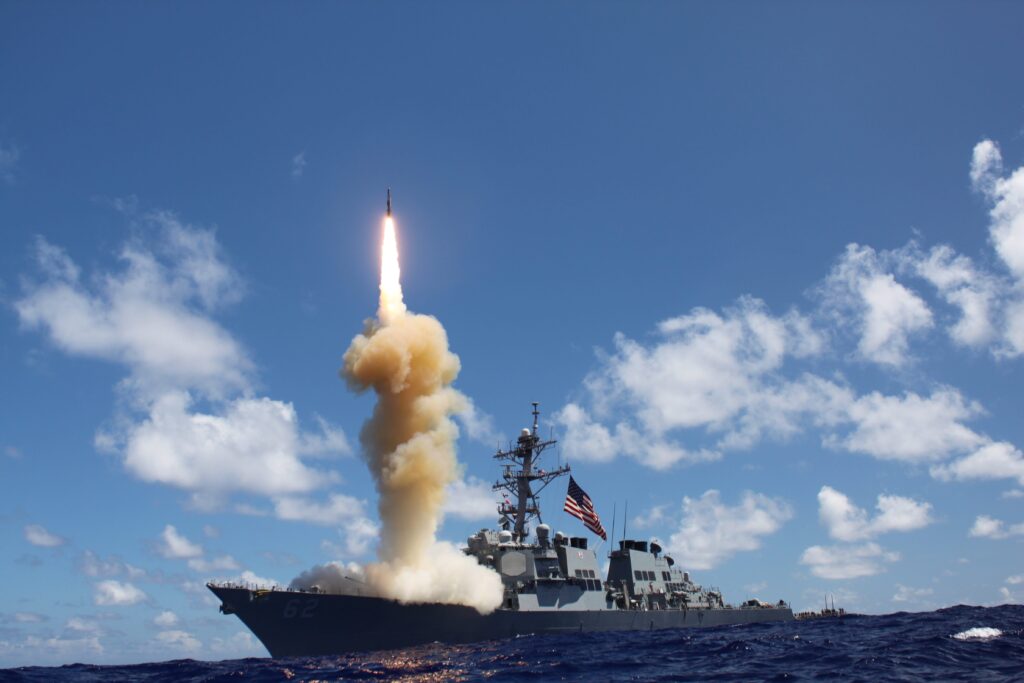- US Navy warships fired SM-3s to intercept Iranian ballistic missiles last weekend.
- Secretary of the Navy Carlos Del Toro confirmed the use of the SM-3 during a Tuesday hearing.
- It’s the first time that the exo-atmospheric interceptor has been used in combat.
US Navy warships used a missile interceptor for the first time in combat over the weekend as they defended Israel from an unprecedented Iranian attack.
Secretary of the Navy Carlos Del Toro said American forces fired the Standard Missile 3, or SM-3, to engage Iranian ballistic missiles that were fired as part of the massive barrage, which included more than 300 missiles and drones launched from Tehran and its proxies.
“We’ve been firing SM-2s, we’ve been firing SM-6s, and just over the weekend, SM-3s, to actually counter the ballistic missile threat that’s come from Iran,” Del Toro said at a Senate Appropriations Subcommittee on Defense hearing on Tuesday.
US officials previously said that two destroyers — the USS Arleigh Burke and USS Carney — operating in the eastern Mediterranean Sea had engaged and destroyed at least four Iranian ballistic missiles, although it was not immediately clear how the warships shot down the threats.
USNI News first reported Monday that the two ships fired between four and seven SM-3s to intercept the missiles, citing unnamed defense officials. Del Toro’s comments to lawmakers appear to be the Navy’s first public acknowledgement of the SM-3 employment.
The SM-3 is an element of the Navy’s advanced Aegis Combat System and uses a kinetic kill vehicle to hit and destroy short- to intermediate-range ballistic missiles during the midcourse phase of flight. The SM-3 has the capacity for exo-atmospheric intercepts, meaning that it can eliminate targets beyond Earth’s atmosphere, unlike the Navy’s other air-defense capabilities.
“SM-3s are unique due to being the only Standard Missile designed to operate in the vacuum of space,” the Center for Strategic and International Studies think tank notes in its Missile Defense Project.
There are multiple SM-3 variants, which can be fired from a Navy warship’s vertical launching system, and the Block I interceptors were first fielded nearly 20 years ago. Despite dozens of tests over the past two decades, the SM-3 had not been used in combat until now.
The SM-3, however, was not the only exo-atmospheric weapon to be called into action over the weekend.
Israel’s Arrow 3 missile defense system, which can also eliminate enemy threats in space, was used to shoot down many of the 120 ballistic missiles that Iran lobbed at Israel on Saturday. Arrow 3 and its predecessor, Arrow 2, make up the top echelon of the country’s sophisticated air-defense network.
Israeli officials have said that 99% of the threats fired by Iran and its proxies — which included one-way attack drones, cruise missiles, and ballistic missiles — were intercepted by Israel’s military and its partner forces in the Middle East.
US Central Command said American forces, specifically, destroyed more than 80 drones and at least six ballistic missiles.
CENTCOM said in a Sunday statement that “Iran’s continued unprecedented, malign, and reckless behavior endangers regional stability and the safety of U.S. and coalition forces.”










